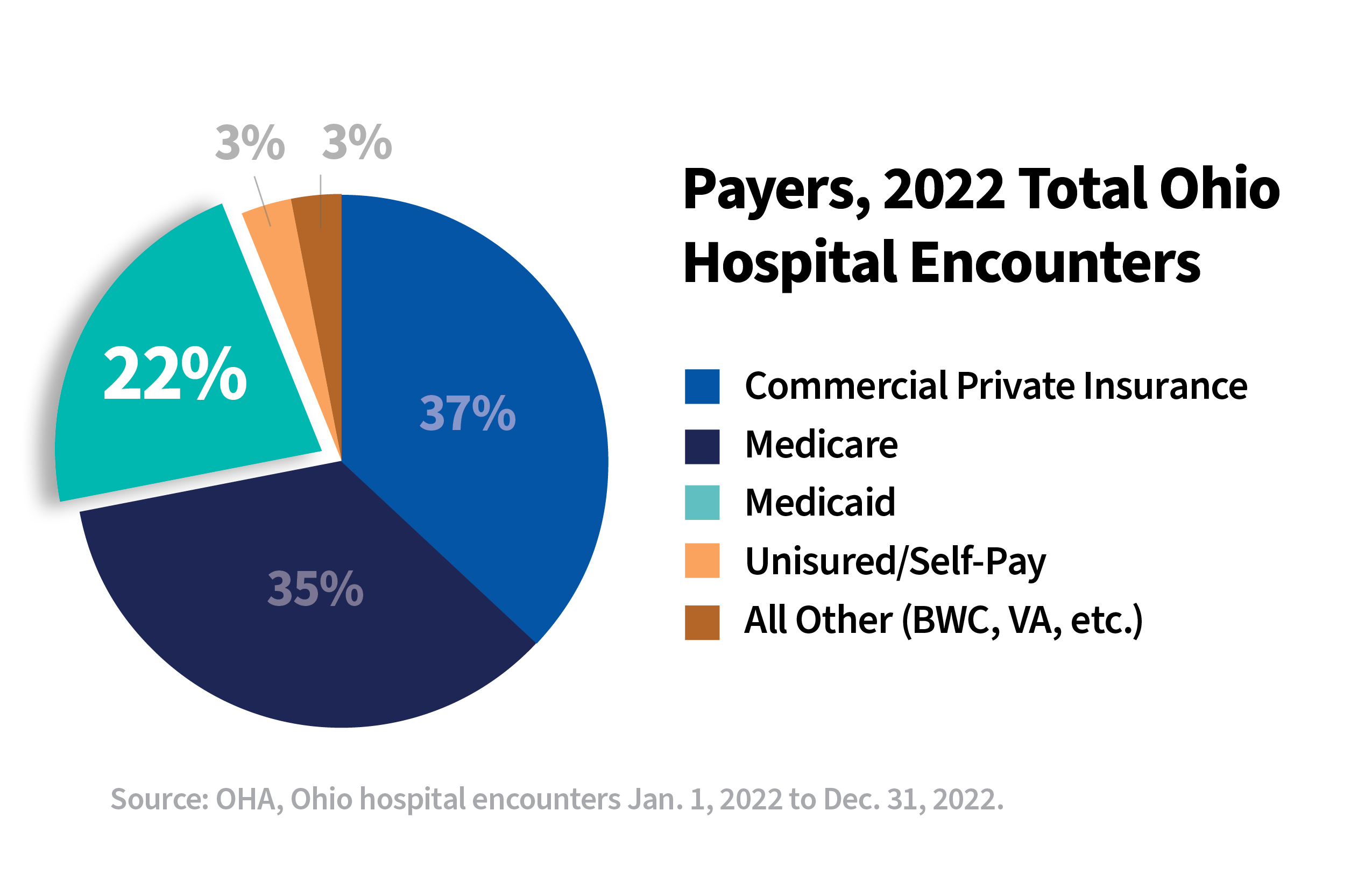Medicaid
Medicaid
Medicaid and the Children’s Health Insurance Program provide health care coverage for people with disabilities and for low-income Ohioans — families and children, pregnant women and the elderly. With a network of over 165,000 active providers, Ohio’s Medicaid program provides coverage for more than 3.2 million individuals, or about 27% of Ohioans.
 The Medicaid program is jointly funded by states and the federal government. In Ohio, the current FY 2023 Federal Medical Assistance Percentage, or FMAP, for most Medicaid expenditures is 69.78%; 78.85% for children; and 90% for Medicaid expansion.
The Medicaid program is jointly funded by states and the federal government. In Ohio, the current FY 2023 Federal Medical Assistance Percentage, or FMAP, for most Medicaid expenditures is 69.78%; 78.85% for children; and 90% for Medicaid expansion.
Finance News – Medicaid
Connect here to view Medicaid-specific Finance News prepared by OHA’s Health Economics & Policy team.
Medicaid and Ohio Hospitals
Medicaid was the payer in 22% of Ohio hospital encounters in 2022 .
Medicaid Eligibility Requirements
Ohio expanded Medicaid program eligibility in 2014 to include additional uninsured adults with incomes up to 138% of the federal poverty level. To be eligible for Medicaid coverage, individuals must:
- Be a United States citizen or meet Medicaid citizenship requirements
- Have or get a Social Security number
- Be an Ohio resident
- Meet financial requirements according to Modified Adjusted Gross Income
Who Is Covered by Medicaid
The Ohio Department of Medicaid reports beneficiaries and expenses by four eligibility categories. Each group has its own income requirements:
- Covered Families and Children, or CFC—Pregnant women, infants and children
- Group VIII, expansion population—Individuals at or below 138% of the federal poverty level, including childless adults
- Aged, Blind and Disabled, or ABD—Individuals with disabilities
- Other—Including elderly
What Medicaid Covers
Medicaid assists in paying for:
- Inpatient and outpatient hospital care
- Physician, midwife and specific nurse practitioner care
- Laboratory and x-ray services
- Nursing home and home health care
- Early and periodic screening, diagnosis and treatment for children under age 19
- Family planning
- Rural health clinics/federal qualified health centers
- Prescription drugs
Next Generation Managed Care Program
The Ohio Department of Medicaid has implemented several strategic initiatives to support its Next Generation Managed Care program. This new program represents the first structural change to the program in 15 years, and wase implemented in phases starting on July 1, 2022. These initiatives include:
- Seven Next Generation managed care organizations responsible for managing benefits that help address members’ health care needs, such as increased access to care coordination and care management supports
- OhioRISE, which is a specialized managed care program for youth with complex behavioral health and multisystem needs
- Single Pharmacy Benefit Manager, or SPBM, which provides pharmacy services across all Medicaid managed care plans and members
- Fiscal Intermediary, or FI, which processes claims submitted via the Electronic Data Interchange
- Centralized credentialing, which is a single, centralized provider credentialing process at the state level
Eligibility Redetermination Returns to Routine Process
The Ohio Department of Medicaid in February 2023 returned to routine eligibility operations following the sunsetting of COVID-era rules. It is critical that Medicaid members take the necessary steps to update their contact information, respond to requests for information (including renewal packets), or transition to other coverage if they are no longer eligible for Medicaid.
| Tools for providers to remind patients of enrollment details |
| OHA Medicaid Unwinding Toolkit |
- Ohio Large Provider Group
- Ohio Department of Medicaid
- Ohio Medicaid Quality and Utilization Program
- Payer Resources for Members
OHA Contact
Quyen Weaver
Senior Director, Health Economics & Policy